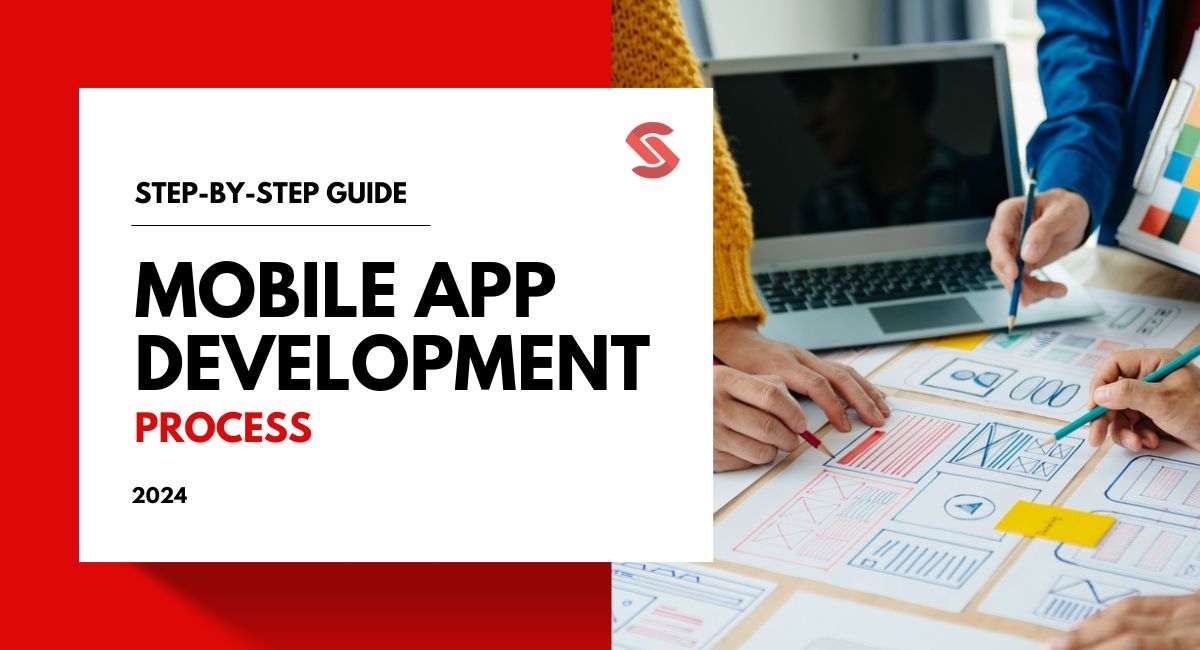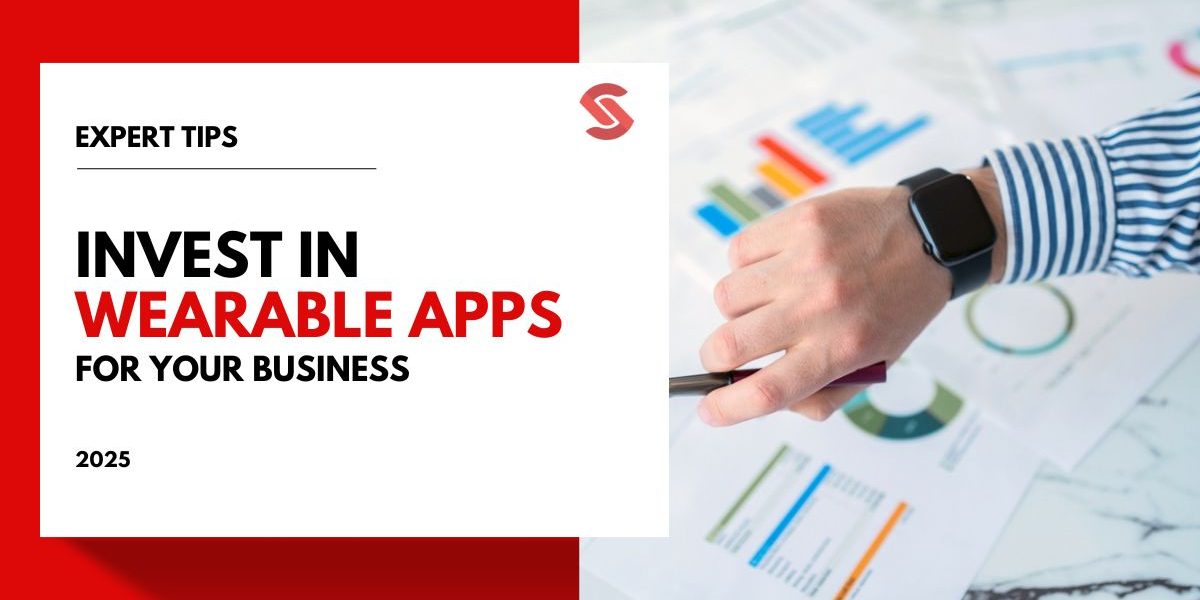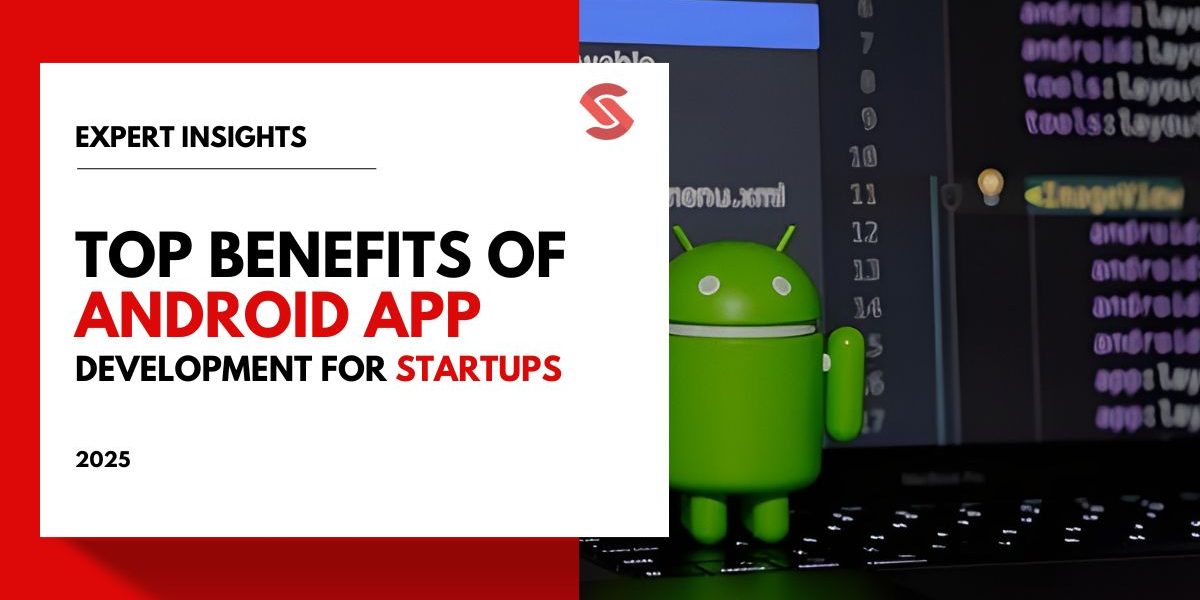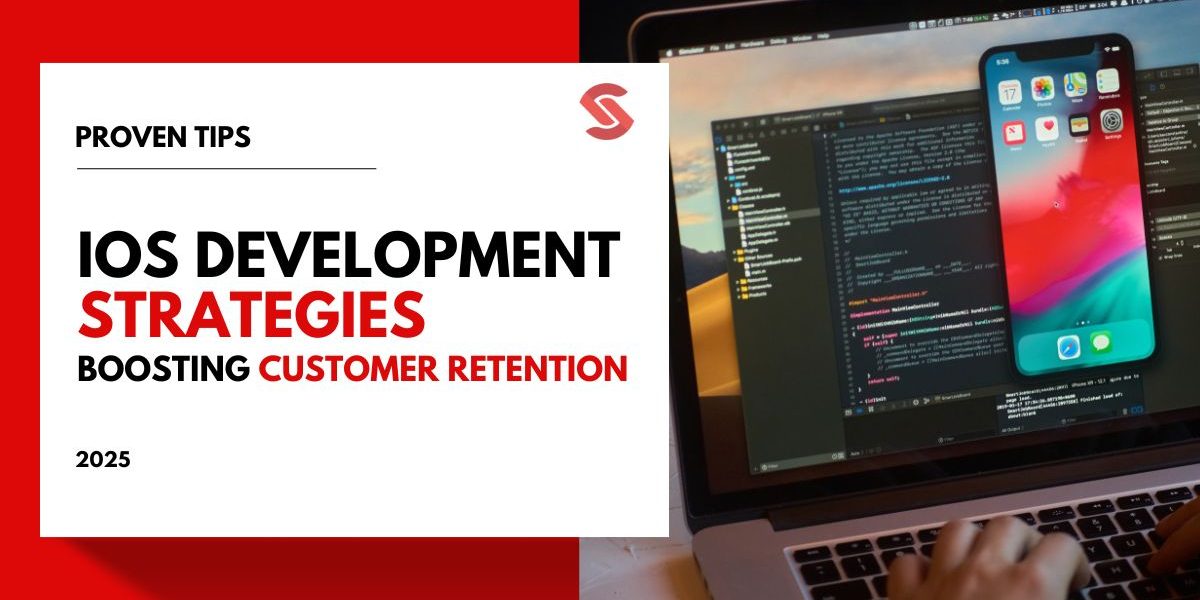Transforming an app idea into a live product is a thrilling and complex process that combines innovation, strategy, and technical skills. This journey, which begins with a simple concept and culminates in the launch of a mobile application, requires careful planning, decisive action, and a thorough understanding of your audience’s needs.
Whether you’re looking to solve a specific problem, tap into a new market, or entertain, the mobile app development process provides a structured pathway to bring your vision to life. With the right mobile app development services, you can turn your innovative concept into a successful, user-friendly application
This guide is designed to walk you through each step of creating a mobile app, from ideation and design through development and deployment, and clear basics about why your business needs a mobile application. Aimed at entrepreneurs and companies ready to venture into the app world, it breaks down the complexities of app development into manageable stages, ensuring your idea not only takes off but soars.
What is Mobile App Development?
Mobile app development is creating software applications that run on mobile devices. It involves designing, building, testing, and launching applications that provide solutions or entertainment to users directly on their smartphones or tablets. This process encompasses various stages, from conceptualizing the app and understanding user needs to coding, designing the user interface, and integrating necessary features.
Developers can create apps for specific platforms, such as iOS or Android, using platform-specific programming languages and development tools, or opt for cross-platform development to target multiple systems simultaneously. As mobile devices become increasingly integral to daily life, mobile app development continues to evolve, incorporating cutting-edge technologies like augmented reality, machine learning, and blockchain to create more sophisticated and engaging user experiences.
Step 1: Strategy Development

The first step in mobile app development is crafting a strategic plan. This involves identifying your objectives for the app, such as solving a particular problem or providing a service, or entertainment. Next, researching competitors in the space is crucial for understanding the market landscape and identifying gaps your app could fill. Here are several points to consider:
Identify Objectives: Define what you aim to achieve with your app, whether it’s solving a specific problem, providing entertainment, or enhancing business operations.
Research Competitors: Analyze competitors to understand market standards, identify gaps, and pinpoint areas for innovation to make your app stand out.
Select Platform: Choose between iOS, Android, or both based on your target audience’s preferences and behavior, significantly impacting your app’s reach and design.
Choose Monetization Method: Decide how your app will generate revenue, whether through ads, in-app purchases, subscriptions, or a one-time purchase price, aligning with your business goals and user expectations.
Step 2: Analysis and Planning

This step involves transforming initial concepts and strategic insights into a detailed, actionable plan for developing the app, focusing on essential aspects like requirements, scheduling, and technical decisions.
Functional and Non-Functional Requirements: Clearly define the app’s functional requirements, specifying every action it must perform. Also, delineate non-functional requirements, such as security, speed, and scalability, which dictate how the app operates under various conditions.
Product Roadmap: Develop a product roadmap that lays out a sequence of phases for the app’s development, including key milestones and feature releases, which helps in estimating the right cost for mobile app development. This roadmap serves as a schedule, outlining when each aspect of the app should be completed and launched.
Technology Stack: Select the technology stack with careful consideration of the app’s requirements, target platforms, and desired performance. This includes choosing the right programming languages, frameworks, databases, and other tools that align with the project’s goals and ensure a robust, scalable application.
Step 3: UI/UX Design
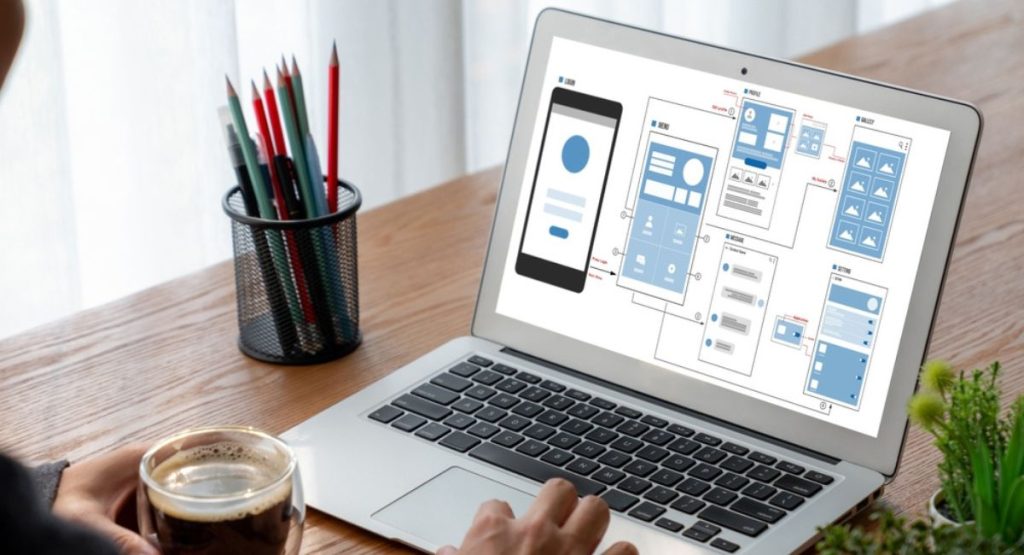
This phase is dedicated to crafting the app’s interface and user experience with meticulous attention, aiming to achieve a balance between intuitive navigation and aesthetic appeal. It ensures that users find the app not only visually engaging but also easy to use, many designers read the UI UX design guide for businesses before creating designs, and it helps enhance overall satisfaction and interaction with the app’s features.
Information Architecture and Workflows: Define the app’s structure and the flow between different screens, ensuring a logical, user-friendly navigation path.
Wireframes: Create basic outlines of screens, serving as a blueprint for the app’s layout, functionality, and user interactions.
Style Guides: Develop a consistent style guide detailing the app’s design elements, such as colors, fonts, and button styles, to maintain visual consistency.
Mockups: Design detailed, static representations of each screen, giving stakeholders a clear view of the app’s appearance.
Prototypes: Build interactive models of the app that simulate user interactions, allowing for testing and feedback on the design before development begins.
Step 4: Building the App

This step involves the actual construction of the app, where plans and designs become functional software. It’s where developers write code, integrate databases, and implement functionalities to bring the app to life.
Frontend: The frontend development focuses on the user interface and experience. It involves translating designs into a functional, interactive front-facing app using HTML, CSS, and JavaScript.
Backend: Backend development is responsible for the server side of the app. It manages database interactions, server logic, and application integration, ensuring the app’s data processing and management are seamless.
Step 5: Mobile App Testing

This critical phase ensures the app is reliable, secure, and user-friendly before launch. It involves rigorous testing across various aspects, from functionality and performance to security, ensuring the app meets all specifications and user expectations.
Security: Security testing checks for vulnerabilities, ensuring user data and transactions are protected from potential threats and breaches, and maintaining user trust.
Functionality: Functionality testing verifies that all app features work as intended, ensuring that user interactions lead to expected outcomes without errors.
Platform and Device: This testing ensures the app operates smoothly across different devices and operating systems, guaranteeing a consistent user experience regardless of the platform.
Performance: Performance testing assesses the app’s speed, responsiveness, and stability under various conditions, ensuring it remains efficient even under heavy load.
Extended Review: An extended review involves analyzing user feedback from beta testing to identify additional improvements, enhancing the app’s quality and user satisfaction.
Step 6: Launch and Marketing
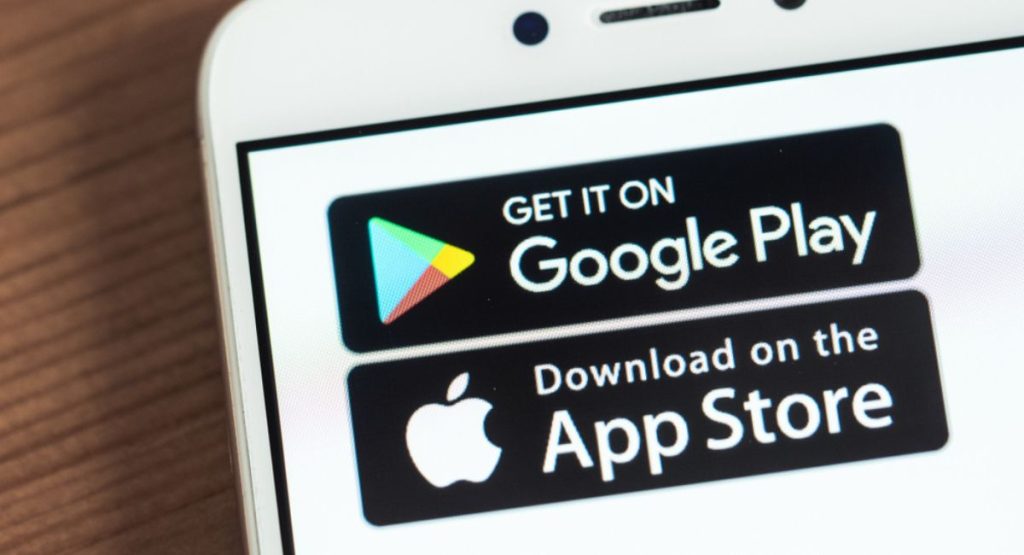
The launch and marketing phase is critical in transitioning your app from development to the hands of users. This step involves submitting your app to the respective app stores, such as Google Play for Android and the App Store for iOS, following their guidelines for approval.
Concurrently, a robust marketing strategy should be in place to create buzz and anticipation. This includes social media campaigns, email marketing, press releases, and potential influencer partnerships to broaden reach.
Effective marketing communicates the app’s value proposition and differentiators, enticing your target audience to download and engage with it. The goal is to maximize visibility and attract a strong initial user base, setting the foundation for growth and success in the competitive app market.
Step 7: Support and Performance Monitoring

After launch, the focus shifts to support and performance monitoring to ensure the app continues to meet user needs and expectations. This involves addressing any technical issues or bugs that users report and releasing updates to add new features or improve functionality.
Regularly monitoring the app’s performance through analytics tools can provide insights into user behavior, app stability, and areas for improvement. This data helps in making informed decisions about future updates and enhancements.
Additionally, engaging with users through feedback mechanisms or support channels is vital for maintaining satisfaction and loyalty. Continuous support and updates demonstrate commitment to your app’s quality and user experience, encouraging ongoing engagement and positive reviews that can attract new users.
What are the four main approaches to mobile app development?
The four main approaches to mobile app development cater to diverse project needs and target platforms. These methodologies offer distinct paths for businesses, like Softnix, to tailor their mobile app strategies effectively. Each approach, from Native to Progressive Web Apps, balances factors such as performance, development time, and user experience to align with specific business goals.
Native App Development
Softnix utilizes Native App Development to build high-performance applications tailored for specific operating systems like iOS and Android. By leveraging platform-specific languages and tools, apps achieve optimal performance and seamless integration with device capabilities, ensuring an intuitive user experience. This method suits projects where leveraging the full potential of the device’s hardware and software is crucial.
Hybrid App Development
Softnix adopts Hybrid App Development for projects requiring a swift market launch across multiple platforms. This approach combines web technologies with native execution, allowing for a single codebase that works on iOS and Android. Though it offers broader reach and reduced development time, it may compromise on performance and access to native features compared to fully native solutions.
Cross-Platform App Development
Cross-platform app Development at Softnix offers a middle ground, utilizing frameworks like React Native or Flutter to develop apps. This approach allows code to be written once and run on multiple platforms, closely mirroring native app performance and user experience. It’s ideal for projects that balance development efficiency and a high-quality user experience across diverse devices.
Progressive Web App Development
Progressive Web App (PWA) Development enables Softnix to create web applications that behave like native apps. PWAs are accessible through browsers on any device, making them highly versatile and eliminating the need for app store submissions. They offer offline capabilities, push notifications, and fast loading times, representing a cost-effective solution for businesses looking to enhance their online presence without the complexities of traditional app development.
Summary
In conclusion, transforming an idea into a fully functional mobile app is an intricate process that requires careful strategy, design, development, and marketing. Each step, from the initial concept to the app’s launch and beyond, is crucial for the success of the project. By understanding the different approaches to mobile app development, businesses can choose the path that best suits their goals, budget, and target audience.
Embracing the complexities of app development with a clear plan and the right team can turn innovative ideas into reality. Ultimately, the journey of creating a mobile app is as rewarding as it is challenging, opening up new opportunities for businesses to connect with users in the digital world.
Frequently Ask Questions about Application Development Services
What Are The 7 Steps To Creating An App?
The seven steps to creating an app include:
1: Ideation and concept development.
2: Market research.
3: Defining functionality and planning.
4: Designing the app.
5: Developing the app.
6: Testing for quality assurance.
7: Launching the app and ongoing maintenance.
What Is The Life Cycle Of An App?
The life cycle of an app encompasses its initial concept, development, launch, user acquisition, maintenance, updates, and eventual retirement. This cycle is continuous as long as the app is active, with ongoing updates and improvements based on user feedback and technological advancements.
What Are The 3 Types Of Apps?
The three types of apps are:
1: Native apps, developed specifically for one platform like iOS or Android.
2: Web apps, which are responsive websites that look and feel like an app.
3: Hybrid apps, which combine elements of both native and web apps.
What Is A Hybrid App?
A hybrid app is a software application that combines elements of both native apps and web applications. Hybrid apps are built using web technologies like HTML, CSS, and JavaScript, and then wrapped in a native container to access device features.
What is the average time to develop a mobile app?
The average time to develop a mobile app ranges from 3 to 9 months, depending on the app’s complexity, the development process, and whether it’s being built for a single platform or multiple platforms.
Should I develop for iOS, Android, or both?
Deciding whether to develop for iOS, Android, or both depends on your target audience, budget, and business goals. If your audience primarily uses one type of device, start with that platform. For broader reach, consider developing for both platforms, either through native development or using a cross-platform solution.
How do I protect my app idea?
To protect your app idea, consider signing non-disclosure agreements (NDAs) with anyone you discuss your idea with. Additionally, trademark your app’s name and logo, and copyright its content and design. Filing for a patent may also be an option if your app offers a unique functionality or technology.

